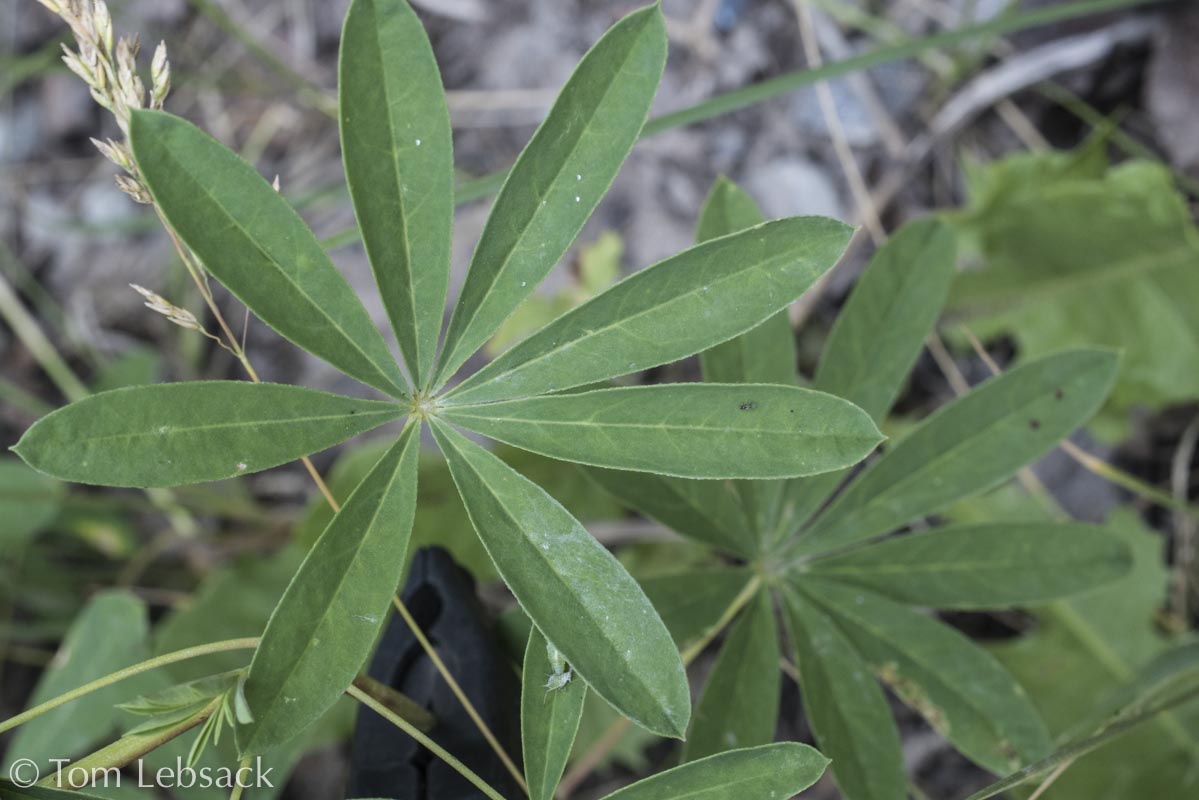Lupinus caudatus
(Tailcup Lupine)
| Scientific Name | Lupinus caudatus | USDA PLANTS Symbol | LUCA |
| Common Name | Tailcup Lupine | ITIS Taxonomic Serial No. | 25981 |
| Family | Fabaceae (Pea) | SEINet Reference |
Click Here |
| Description |
Life zones and habitat: Foothills to subalpine (5300 to 10500 ft); dry or moist meadows and open areas, roadsides. Plant: Erect perennial 8 to 24 inches tall with 1 to several reddish-purple stems extending above the foliage. Leaves:Palmately-divided leaves on long petioles with 5 to 9 leaflets, each narrowly elliptic to lanceolate, up to 2 inches long; flat or folded, hairy surfaces. Inflorescence: Many pea-like blossoms arranged in a raceme 2 to 8 inches long atop each stem; corolla light to dark blue, purple or white; banner lighter blue or whitish in the middle, upward-curving and usually hairy on the back; calyx with a short spur. Bloom Period: May to September. Fruit: Hairy seed pods 3/4 to 1 inch long containing 4 to 6 seeds. References: "Flora of Colorado" by Jennifer Ackerfield, American Southwest, US Forest Service Fire Effects Information System and Montana Field Guide. |
BONAP Distribution Map Map Color Key
Map Color Key |
Colorado Status: Native |
© Tom Lebsack 2025
Banner photo: Castilleja rhexifolia and a brewing storm over the San Juan Mountains
I try to provide accurate, up-to-date, and relevant information, but cannot guarantee the completeness or accuracy of any information presented on this website. I use authoritative references to insure high standards of accuracy and review and update the information frequently.




